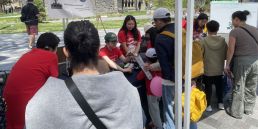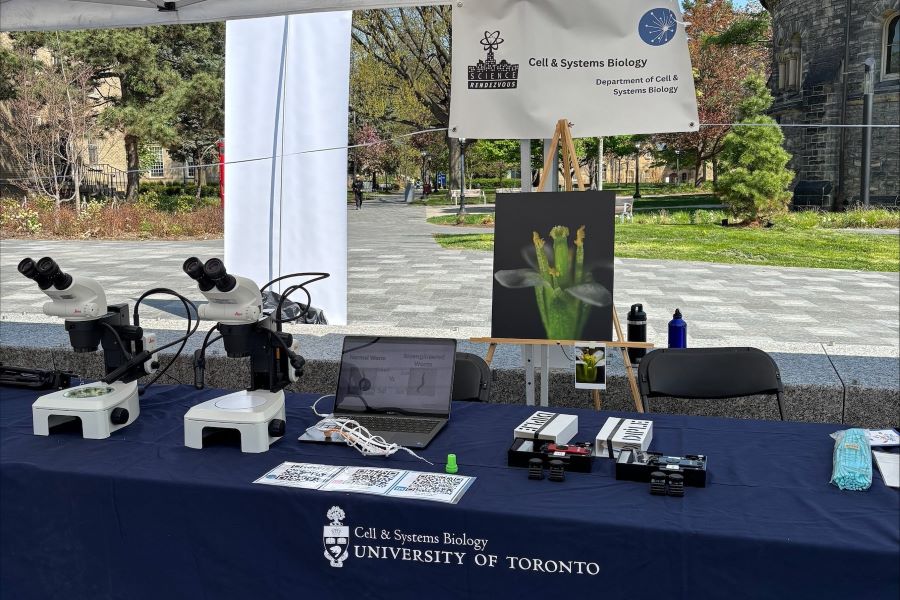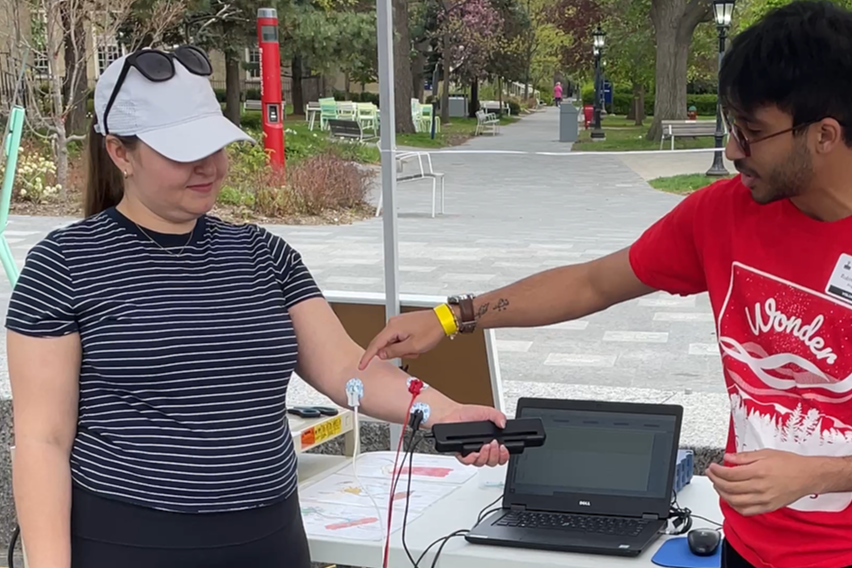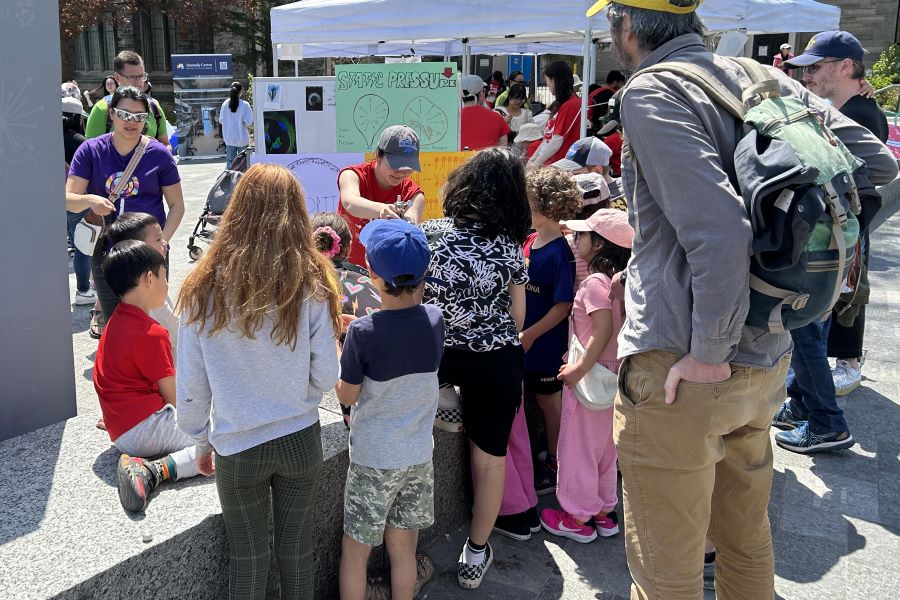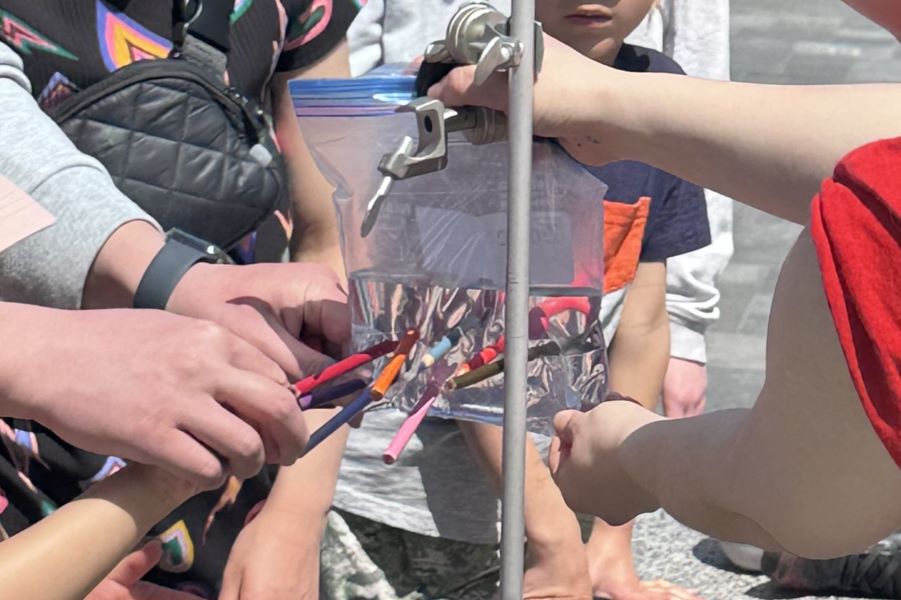CSB shared our stories under shady trees as students, staff and faculty presented at Science Rendezvous 2025.
Science Rendezvous is an annual science festival across Canada, and we had many new faces from CSB to present our work on UofT’s leafy Front Campus.
Squeezing in some neuroscience
Stephanie Shishis works on behavioural neuroscience in the Kim lab. Aided by volunteer Rubin Khandekar and electrodes from the BIOPAC system, they measured visitors’ grip strength while showing the electrical pulses that were activating the grip muscles. This led to discussions of how these impulses can go awry in diseases like Parkinson’s.
Linking shape and function at the molecular level
Matea Maurice demonstrated all the forms that proteins can take and the variations that can change function, drawing on her research in the Saltzman lab. Visitors made their own alpha helices, beta sheets and intrinsically disordered regions out of pipecleaners and took these model proteins home.
Victoria Zhang and Neil Macpherson demonstrated the different organelles inside our cells, each of which has a fascinating function. From the shipping warehouse of the Golgi to the powerhouse of the Mitochondria, Zhang and Macpherson showed our guests the complexity of life, even within a single cell. They helped visitors understand the shape these organelles make through forming their own organelles out of modelling clay.
Karan Ishii from the Plotnikov lab cleverly demonstrated the physical forces that keep cells strong by showing how even a plastic bag that’s pierced all the way through won’t leak due to hydrostatic forces. She then explained to the large crowds gathered around her how she studies the forces exerted during cell migration and the cortical tension that keeps the cells intact.
It’s amazing what you can see with the right lenses
Plant scientists Professor Heather McFarlane and Yoshioka lab grad student Sofia Finley demonstrated the power of smartphone-compatible DIPLEscopes. With assistance from volunteer Abby Kuo, they revealed the columns, crescents and jigsaw pieces that cell walls make in different tissues of the plant; visitors took these beautiful patterns home on their phones!
Ernest Liang turned complex cellular patterns into a quiz. Guests were shown unlabelled microscopic images ranging from the folded leaves inside a seed to crawling cancer cells and were asked to guess which type of organisms they came from. The correct identification surprised many visitors, but some got it almost 100% right.
Our visitors were excited to look down the microscope and see tiny living organisms wriggling around on a plate. Ruby He and Linda Li of the Saltzman lab showed worms that move by rolling and going in spirals and contrasted these bioengineered worms with normal worms that move in a wiggly line. This activity was so popular, we had to cut off the line for visitors as our successful day came to an end.
Thank you to all our presenters, and to Lisa Matchett, Reta Aram, Tom Gludovacz and Alice DesRoches who helped with preparations!

